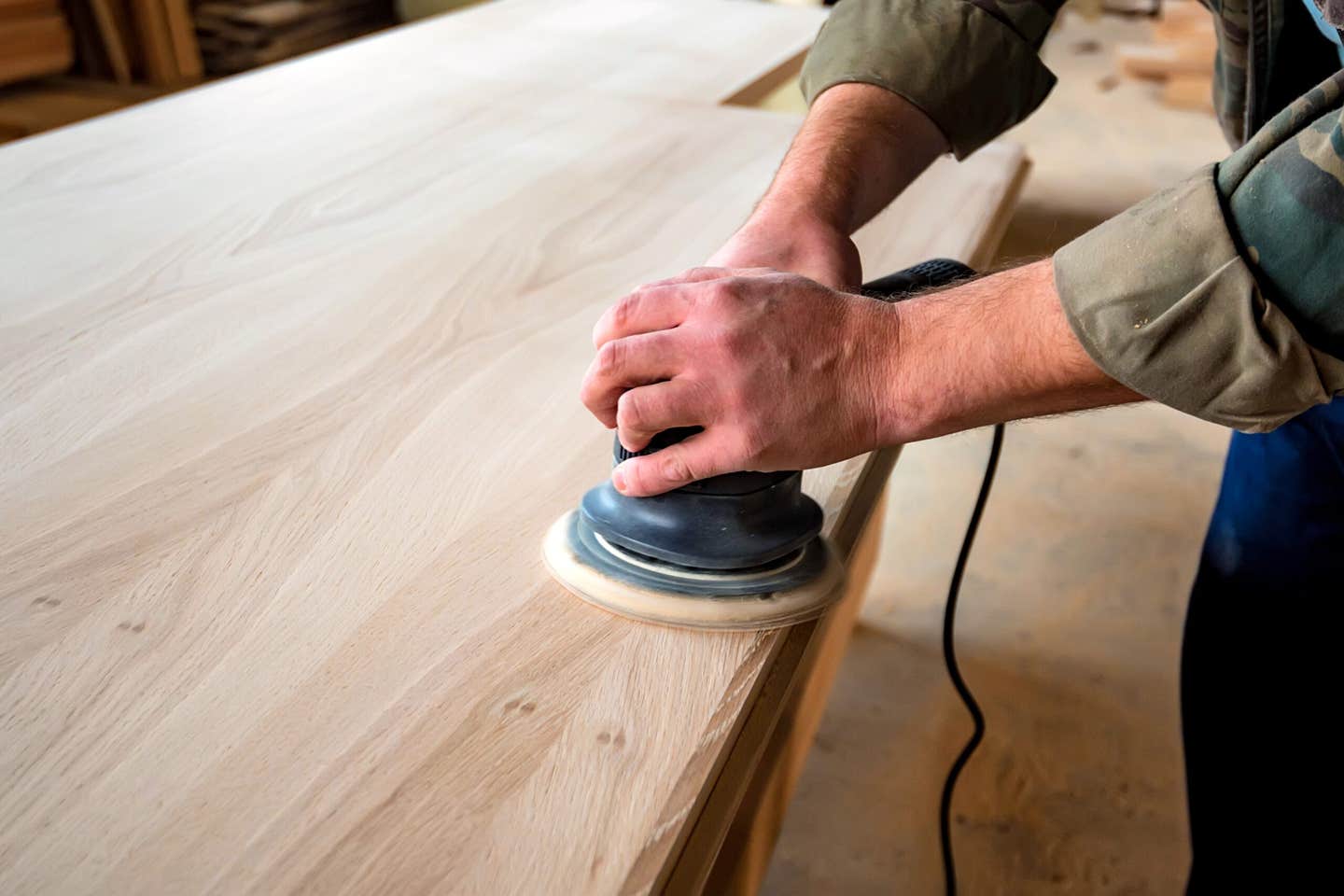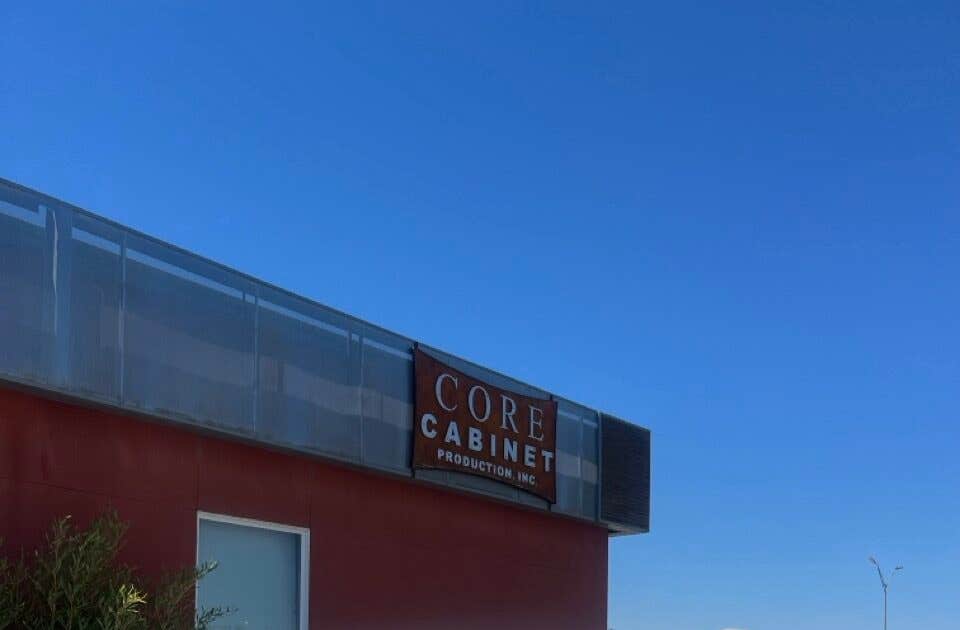Making the dream come true
Paul Eppley, a woodworker since seventh grade, has built a large, successful shop in northern New Jersey
There’s a lot of factors involved in growing a small shop to a 30-person operation. Proper management is at the top of the list, according to Paul Eppley, founder, owner and president of Eppley Building & Design, a custom cabinet and millwork company in Hawthorne, N.J.
“At first, I had underestimated what it takes to manage a larger company,” he says. “It’s exponentially more effort as you grow. One guy can manage a five-man, maybe a 10-man company. But when you get up to 20 to 25, you need really good upper management. I learned about that and now we have what I consider to be the best team.”
Eppley is used to having a lot of people around. He grew up with eight siblings in Ridgewood, N.J., and got hooked on woodworking during a summer school program.
“That was in seventh grade. That’s where I found my vocation. I asked my dad for a ride to Sears to buy some tools, and he said, ‘that’s expensive’. I said, ‘I didn’t ask you for money, I asked you for a ride.’ So, I bought a miter box, router and table saw. The next day I was making countertops for my next-door neighbor,” he says.
By high school, he was most attentive in shop class and got a job making raised-panel doors at night.
“I graduated in ’77 from Ridgewood High School. I was always looking for more experience or more money. From ’77-’82, I went from one shop to another. The last one was a union shop with about 150 people. They did super high-end commercial fit-up work. That’s where I decided I wanted to have my own business. I wanted to have a 40-man architectural woodwork shop.”
He left to work for a general contractor where he ran the trim and cabinet division, then started a general contracting business employing several family members. For the next eight years, he focused on residential renovations and additions in northern New Jersey. In 1989, he decided to change the structure of his business and how work was obtained.
“I got tired of having to resuscitate people on Saturday morning when they got the price for a wall unit. The people I was approaching didn’t understand what was involved. I decided to market through architects, designers and general contractors.”
Off to the races
In 1990, Eppley formally incorporated and moved his operation into a 5,000-sq.-ft. shop in Waldwick, N.J., where it remained for 10 years. It moved to the current 12,500-sq.-ft. shop in 2001.
“When this place became available, we jumped on it. We built the offices and the spray room, and we fit up the place with air and power, put all the machines in, and were off to the races,” says Eppley. “We went from a 10-man shop to a 15-man shop in 2001. Then we went nuts. It went from 15 to 20.”
Working with the same group of about half a dozen general contractors since 2001, the shop primarily serves the high-end residential market in Manhattan, eastern Long Island, New Jersey and Connecticut. Commercial work is only about five percent of the business.
“We’ve done a couple of nice restaurant and hotel jobs. That’s always more or less been through the same contractors that are doing the residential work. We’ve done some really nice work for some very famous people. I’m not looking to blow my horn in that direction, but we’ve done some really cool stuff.
“One of my favorite sayings is it’s an incredibly small world in high-end residential. You’re in one of the biggest cities (New York) in the world, but everybody knows each other. It’s just amazing. It becomes a pretty tight knit family.”
Client styles and tastes run the gamut, and Eppley is happy to accommodate.
“What I love is the variation. We don’t offer three different styles of cabinetry; it’s what the architect and designer want. White oak has replaced maple. Contemporary is there whether you like it or not, and it’s not as easy as it looks. Everything’s got to be plumb and level and nothing’s plumb and level. Finishes, we get lots of (orders for) high gloss and flat sheens.”
Mixed materials are also in demand. Eppley says he wants to be like a “James Bond shop” and not just be limited to wood.
“Nowadays, the GC’s that hire you in millwork want you to do the metalwork, and a lot of them want you to do the glass. They want the package. We sub out the glass and metal, but we do take care of it.”
What’s in the shop:
- Northwood Iron Horse twin-table CNC router
- Sawstop table saws (2); Diehl ESL 25 rip saw, Martin T-60 sliding table saw
- Kolle F-45e (2); Martin T-12, SCMI L’Invincible shapers
- Brandt edge bander; Weber KSN 1350 wide belt sander, Kaeser & Boge compressors
- Martin T- 45 planer; Tannewitz & Oliver band saws, Martin T- 54 jointer
- Gannomat Index 130 horizontal drill/insert & case clamp
- Omga V-235 automatic miter saw, Whirlwind upcut, Omga FP-3000 positioning fence (2)
- Two spray booths; Kremlin spray guns, custom Peterbilt box truck
- Software: Autocad, Microvellum, Mastercam, Sketch Up, Inventor & Tradesoft.
Right help, right equipment
Eppley’s main roles are estimating, sales, quality control, and administrative. He has three project managers, four CAD draftsmen, a bookkeeper and vice president, eight cabinetmakers, six finishers, two drivers/shop helpers, and two installers.
“We used to have 10 installers but now we’re subbing out about 90 percent of it and doing the rest in-house. And that’s been pretty good for us. That actually came to be because Covid shut down installation. It’s had a really good effect on our bottom line.”
Eppley has been slowly implementing principles of lean manufacturing, efficiency and accountability. In 2010, he purchased his first CNC machine at the International Woodworking Fair (IWF).
“I didn’t want to get into CNC because I didn’t know much about programs for it. When we had the right help, then we got the right equipment. We have a Northwood CNC. It’s one of our best investments and I’m still happy with it.
“We make all our own doors because of what I learned in high school with that part-time job. We sub out drawers, large molding runs, and large veneer layups. Everything else we do in house.”
Staying put
Eppley just renewed a five-year lease on his shop, with an option for another five. The company has a bright future ahead, and continues work on its backlog, which averages about six months.
“My plan in a nutshell is to go another 10 years. I’m 63. I’m an avid fresh air enthusiast – I love the outdoors, cycling, swimming, trying to keep myself in shape. I commute to work on my bike,” says Eppley, adding that an ideal succession plan would involve employees taking over.
“I’ve been thinking about having an ESOP (Employee Stock Ownership Plan). We have some guys here who are young and I’m starting to wrap my brain around how to structure that, how to sell the company to the employees. The big hurdle for me is not owning the building.”
Eppley, who keeps in touch with his 94-year-old high school shop teacher, is grateful to all who motivated and guided him.
“I still have a love for the craft, hand work, hand tools, any kind of tools. I also try to apply that same passion to the business side. It’s really challenging to keep the ball rolling and keep it profitable. I’ve had some good helpers, some good mentors, some people that really did help me along the way.
“There’s always a feeling like you never figured it out, and on a bad day that’s troublesome. But on a good day, it’s exciting. It’s always challenging to come up with solutions, but it’s also very rewarding.”
This article was originally published in the May 2023 issue.







